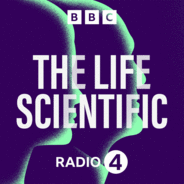Callum Roberts, Professor of Marine Biology at the University of York, learnt to dive in a leaky wet suit in the North Sea when he was a boy. As a student, he was introduced to the extraordinary diversity of marine life on a coral reef in the Red Sea. His job was to count different species of fish but he also noticed several different species of fish working together to defend a common resource, lurid green algal lawns. Life on coral reef is notoriously competitive and collaboration on this scale was unexpected. In 1991 he wrote a ground-breaking paper about marine reserves showing how it is possible to have our fish and eat them. It was a radical suggestion at the time. Now many countries are committed to protecting 10% of the ocean in this way by 2020. Aiming to maintain fish stocks in their current state is, Callum says, ridiculously unambitious. On sabbatical at Harvard University, he started reading historical accounts by pirates, travellers and fishermen and his eyes were opened wider still to just how rich marine life could be. As early as the 12th century laws were being put in place to help preserve fishing stocks. Two hundred years ago off the coast of Britain a diverse array of sea fans and sponges covered the sea floor. There were millions of oysters and scallops the size of dinner plates.
Producer: Anna Buckley.
Bitte melde dich an oder registriere dich, um fortfahren zu können.

Wissenschaft & Technik
The Life Scientific Folgen
Professor Jim Al-Khalili talks to leading scientists about their life and work, finding out what inspires and motivates them and asking what their discoveries might do for us in the future
Folgen von The Life Scientific
336 Folgen
-
Folge vom 01.05.2018Callum Roberts on the urgent need for marine conservation
-
Folge vom 13.03.2018Stephen Reicher on the psychology of crowdsStephen Reicher is a social psychologist at St Andrews University who has spent decades understanding how people behave when in a group. To do so, he's often had to immerse himself among the subjects of his studies, from the Bristol riots in 1980 to the millions of Hindu pilgrims who go to the Magh Mela. Stephen Reicher talks to Jim al-Khalili about the positive and the negative sides to a crowd and the role of a leader of a crowd. He explains how he gave up a place to read medicine, to the annoyance of his parents, to study psychology. Now, he says, his mother would be proud of him as he's publishing research on the health benefits of attending mass gatherings.
-
Folge vom 06.03.2018Clare Grey on the Big Battery ChallengeNext time you swear at the battery in your mobile phone, spare a thought for the chemist, Clare Grey. Having developed a new way of looking inside solids (using nuclear magnetic resonance), her interest in batteries was sparked by a man from Duracell who asked her a question at an academic conference, and charged up by some electrochemists she met playing squash. For the last twenty years she has sought to understand the precise chemistry of the rechargeable lithium ion battery. And her insights have led to some significant improvements. In 2015 she built a working prototype of a new kind of battery for electric cars, the lithium air battery. If this laboratory model can be made to run on air not oxygen, it could transform the future, by making electric cars more energy efficient and considerably cheaper. Clare talks to Jim Al-Khalili about the years she has spent studying rechargeable batteries, seeking to understand, very precisely, the chemical reactions that take place inside them; and how this kind of fundamental understanding can help us to make batteries that are fit for the 21st century.Producer: Anna Buckley.
-
Folge vom 20.02.2018John Burn and the genetics of cancerProfessor Sir John Burn, has made Newcastle on Tyne a centre for research on genetics and disease. He was one of the first British doctors to champion the study of genes in medicine back in the 1980s. More recently his research with families with a propensity to develop certain cancers has shown the benefits of taking aspirin as a prevention against the disease. John Burn was part of the team that set up the Centre for Life on derelict industrial land near the River Tyne, where the public can watch research in action. It now attracts a quarter of a million visitors each year to its public science centre. John Burn was knighted for services to medicine in 2010 and was one of first 20 'local heroes' to have a brass plaque on Newcastle Quayside in 2014, alongside Cardinal Hume, Alan Shearer and Ant and Dec.
